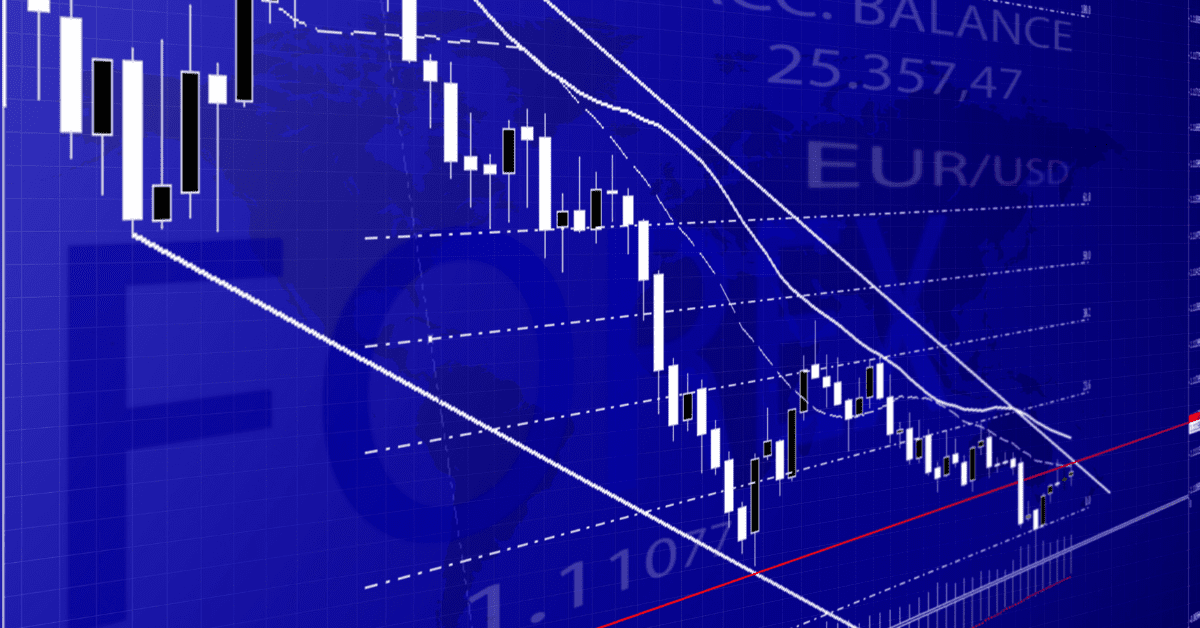Trading Chart Patterns help you identify reversal and continuation possibilities when trading the forex market.
Many different pattern types can occur, and each one has the potential to signal a profitable trade opportunity.
Popular and reliable examples include Head and Shoulders, Double Top, Double Bottom, and triangle formations.
Each pattern type has specific characteristics that can be used to identify it on a price chart.
What are Chart Patterns?
The “father” of Chart Pattern technical analysis is best attributed to Richard Schabacker and his 1932 book Technical Analysis and Stock Market Profits.
He promoted using repeatable patterns across markets to understand price action better. This history and more are summarized in this article on stockcharts.com.
Over the years, traders everywhere have expanded and broadly implemented his approach.
Chart Patterns are geometric shapes drawn onto prices reflecting trader psychology and a market perspective.
You can improve their likelihood of success by combining them with other technical analysis tools and techniques.
How are Chart Patterns different than Harmonic Patterns?
Harmonic chart patterns are a form of technical analysis seeking to identify reversal points in the market.
They are based on Fibonacci ratios and can provide traders with specific price levels for entering and exiting trades.
Since they are very different, they are beyond the scope of this article, but if you would like to learn more about them, you can here.

What Do Chart Patterns Mean in Forex Trading?
Chart Patterns reflect traders’ opinions about an instrument.
You can see traders contemplating a reversal by witnessing rising or falling interest in an instrument or trying to find a price they can agree on in a continuation.
They reflect the battle between Bulls and Bears in a price discovery exercise. Learning to identify and use them in the correct context will give you greater market insight and more successful trades.
What Types of Chart Patterns are There?
You will find two types of Chart Patterns: Continuations and Reversals.
Continuation patterns occur when the market is expected to extend the prevailing Rally or Selloff.
Reversal patterns form after a significant move and signal that the price could change directions. Identifying each pattern in the correct context improves trader success.
Technical analysts have identified many patterns; however, the primary and most common ones are discussed here.
The four continuation Chart Patterns are:
- Pennants
- Flags
- Rectangles
- Triangles
The four reversal Chart Patterns are:
- Head and Shoulders
- Inverted Head and Shoulders
- Double Tops/Bottoms
- Wedges

Do Continuation Patterns Keep a Rally or Selloff Moving?
You will find continuation patterns occurring at the mid-point of a prevailing Rally or Selloff and indicating price action will likely continue in the same direction after the pattern completes.
This often includes a resumption of the prevailing Trend and a resumption of Momentum.
The value of correctly identifying them is avoiding a false reversal and keeping the opportunity to enter or re-enter a trade.
Pennants and Flags
Pennants or Flags signify a pause in a Rally or Selloff with consolidation before returning in the same direction.
This price action often corresponds with an uptrend or downtrend in a market. A Pennants price pattern forms small wedge patterns, whereas Flags are usually horizontal.
Once complete, the instrument returns to its original direction.

Rectangles
Rectangles form when price action trades between two parallel lines and signals a continuation of the prevailing Rally or Selloff.
The pattern is complete when the price breaks above or below the Rectangle.
In addition, rectangles often form between Support and Resistance lines, each a Support level and a Resistance level.

Triangles
There are three types of triangle Chart Patterns: Symmetrical Triangle, Ascending Triangle, and Descending Triangle.
Symmetrical triangles form with two converging lines coming together at a point and price action trading between them.
The pattern is complete when the price breaks out of the triangle to the upside or downside, consistent with its original direction.
The initial direction may include a Bullish or Bearish trendline.
Ascending Triangles are a Bullish continuation pattern occurring during Rallies with an upward trend, flat Resistance, and rising Support, creating a triangle pattern that completes on an upside breakout.
Conversely, Descending Triangles are a Bearish continuation pattern forming in Selloffs with a downward trend, falling Support, and horizontal Resistance, leading to a breakdown in the pattern completion.

Find New Opportunities with Reversal Patterns
Reversal patterns are the opposite of continuation patterns and indicate a change in direction occurring at the ends of Rallies and Selloffs.
Reversals can coincide with trend reversal, lower lows, lower highs, higher highs, and higher lows.
The value of identifying reversals is to help you find entries, lock in profits and avoid staying in a trade too long.
Head and Shoulders and Inverse Head and Shoulders
The Head and Shoulders pattern is one of the most recognizable reversal patterns. It occurs after a Rally and signals a potential change to a Selloff.
The pattern is created by a peak (left shoulders top), followed by a higher peak (head), followed by a peak similar to the first (right shoulders top).
This creates a “rounding bottom” on the price chart where the shoulders are smaller peaks.
The neckline is created by connecting the lows of the two troughs between the shoulders and head. A breakout below the neckline signals that the price could fall lower.

The Inverse Head and Shoulders pattern is the mirror image of the Head and Shoulders pattern and is just as noticeable.
You will find it after a Selloff and signals a potential change in direction to a Rally.
The pattern is created by a trough (left shoulder bottom), followed by a lower trough (head), followed by another trough similar to the first (right shoulder bottom). The shoulders are smaller troughs.
The neckline is created by connecting the highs of the two peaks between the shoulders and head. A breakout above the neckline signals that the price could rise higher.

Double Tops and Double Bottoms
A Double Top is a Bearish reversal Chart Pattern with two peaks at the same price level, and a Double Bottom is a Bullish reversal pattern with two troughs at the same price level.
Triple Tops and Triple Bottoms are similar but with three peaks or troughs.
The success rates of Double Tops and Double Bottoms work well with other technical analyses, such as Momentum and Swing Highs and Lows.


Bullish Wedge and Bearish Wedge
A Bullish Falling Wedge or Bearish Rising Wedge is a wedge pattern indicating the start of an upcoming reversal.
The pattern is characterized by two converging lines and a period of low volatility, which makes it a reliable indicator of a Rally or Selloff.
Bullish Falling Wedges occur at the end of Selloffs, while Bearish Rising Wedges occur at the end of Rallies.

What are the Limitations of Using Chart Patterns?
Chart Patterns are a valuable tool in technical analysis but should not be used as the sole indicator of price direction.
The primary benefit of Chart Patterns is that they provide insights into price action and can help traders identify potential trading opportunities and reversals.
Chart Patterns must follow specific rules and be accompanied by other technical analysis tools and techniques to be effective.
Trend, Momentum, Japanese Candlesticks, and Support and Resistance are all technical indicators that should be coordinated with Chart Patterns when assessing an opportunity.
How can you Trade Successfully with Chart Patterns in Forex?
Trading with Chart Patterns helps you discover opportunities to trade reversals and breakouts.
In addition, the risk-reward ratio of Chart Pattern opportunities is often excellent since they frequently complete near Support and Resistance areas and use chart lines.
This trading approach will be practical when the pattern is clearly defined and easily identified on the chart.
A Beginner trader will find learning this too helpful in trading.
However, you must still confirm the move with other tools and identify a stop loss and target.
Developing a solid understanding of technical analysis and market dynamics is essential to maximize the success of any trading strategy.
Combining these tools isn’t a simple strategy, but it’s essential.
If you need a system like this for trading, as a beginner or experienced trader, you can learn the Six Basics of Chart Analysis for free here.
In addition, you’ll get free weekly analysis and much more at no cost with our Forex Forecast.
What are Your Next Steps?
If you need help finding Chart Pattern opportunities, learn the Six Basics of Chart Analysis, which you can download for free here.
The “Six Basics” will give you a strong foundation in chart analysis which you can incorporate with what you’ve learned here about Trends.
In addition, when you get the “Six Basics,” you’ll also get Forex Forecast delivered to your inbox every Sunday.
Forex Forecast is delivered weekly to your inbox and provides the following:
- Trade Ideas and Analysis
- I will show you the trade opportunities I’m watching using the Six Basics of Chart Analysis and Advanced Strategies.
- Case Studies from Around the Web
- Watch how applying the Six Basics worked on some of the best, most profitable trades.
- Trading Education Guides and Videos
- Want to learn most Six Basics techniques and Advance Strategies? I produce Videos and Guides to help you learn and build a better trading practice.
- Links to New Articles
- I publish new articles on topics traders will want to know about every week, and you can find out when they post.
- Positionforex.com News
- Did something change at positionforex.com? Learn about it here first!
- Links to upcoming webinars
- Attend free webinars to improve your trading.
- And Much More
- Tools, Membership-only Videos, and more will be released in the Forex Forecast.
The best part – it’s completely free.
Select a few of your favorite currency pairs, and start to identify Chart Patterns and examine how they coincide with price movements on a candlestick chart.
Experiment with different patterns and see if you find them easy to recognize.
If you still need to learn how to use Chart Patterns in trading, download the Six Basics of Chart Analysis, and you can apply the same strategies we use here every week.
Frequently Asked Questions
What is the Best Chart Pattern?
The most successful chart pattern is the one with the most significant confirmation.
The advantage of using multiple indicators and techniques is casting a wide net and getting confirmation from numerous sources.
The additional verification improves your confidence in any trading opportunity.
How Many Types of Chart Patterns are There?
There are more than 35 chart patterns that technical analysis traders use to predict movements in forex markets.
However, most traders focus on the patterns mentioned here, which are the most common and will help your trading the most.






